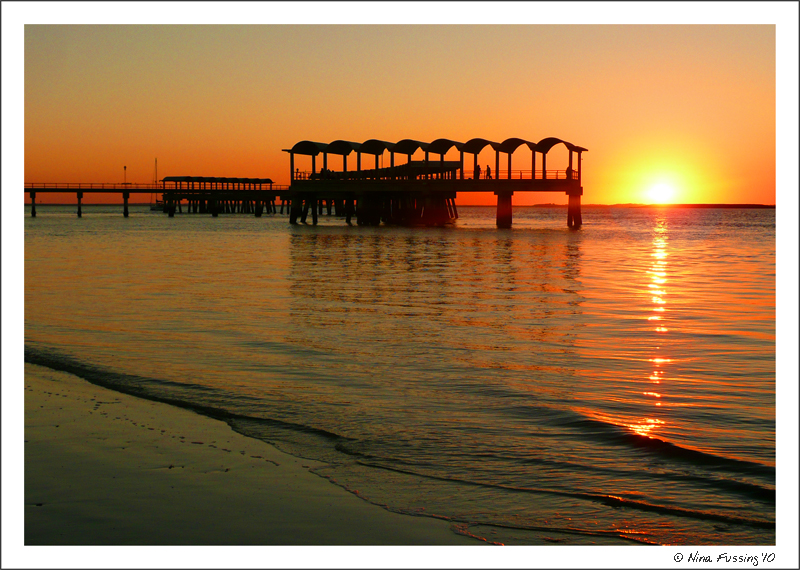
Jekyll Island
From Golden Isles Georgia, "The Wanderer: Georgia's Last Slave Ship" -- The vessel Wanderer, built as a racing schooner in 1857, instead achieved a notorious record in the brutal and illegal transport of slaves to America.
At 114 feet in length and 234 tons, the Wanderer was built for speed, winning its first regatta off the coast of Brunswick in 1858. Soon after, the vessel was sold to William Corrie of Charleston, SC, who, seeing a profit to be made in the outlawed slave trade, outfitted it for human cargo.
The Wanderer, Georgia's Last Slave Ship
In September of 1858, aided by its owner's trickery and deceit, the Wanderer sailed to the west coast of Africa and took on board some 490 slaves. With the speed to elude capture, the Wanderer reached American waters off Georgia's Cumberland Island and on November 28, 1858, the slave ship sailed into the St. Andrews Sound south of Jekyll Island. On board were roughly 400 enslaved Africans who were illegally imported to the United States in one of the most sensational and controversial moments in Jekyll Island history – and brought the island into the middle of the most heated moment in our country’s history. The captives aboard the slave ship Wanderer, which landed on the south end of Jekyll Island, GA in 1858, were one of the last known groups of enslaved Africans sold into captivity in America. From Jekyll Island, many were sold to South Carolina. Having received a large payment for the slaves (perhaps as much as $600 each), Corrie totally refurbished the vessel and outfitted it as a pleasure craft.
The Wanderer subsequently changed hands; first to Charles Lamar and then to David Martin, both of whom sought to profit by returning the craft to illegal slave-trading. However, the outbreak of the Civil War saw the Wanderer seized by the Union Army and outfitted with deck guns. Her huge fresh water tanks and remarkable speed, once so important to success in transporting slaves, were now used to supply blockade ships and for dispatching urgent messages. After the war, the Wanderer was briefly used in the West Indian fruit trade until she crashed against the rocks of Cape Maisi in Cuba in 1871 and sank.
Today, you can visit The Wanderer Memorial at St. Andrews Picnic Area on the south end of Jekyll Island. This memorial is dedicated to the roughly 400 enslaved Africans who were illegally imported upon the Wanderer to the United States in one of the most controversial moments in Jekyll Island history. (source: Golden Isles Georgia)
The Slave Ship Wanderer by Tom Jefferson Wells
On November 28, 1858, the Wanderer sailed into the St. Andrews Sound south of Jekyll Island. On board were roughly 400 enslaved Africans who were illegally imported to the United States in one of the most sensational and controversial moments in Jekyll Island history – and brought the island into the middle of the most heated moment in our country’s history.
The Wanderer Memorial includes a sculpture by artist Mario Schambon and three text panels describing this event, the sensational trial of the slave runners, and the fate and legacy of many of the enslaved Africans.
The Wanderer Memorial is located on the southern end of Jekyll Island in the St. Andrews Picnic area. It was dedicated on the 150th Anniversary of the ships landing in 2008. The Wanderer Memorial is made possible by the Jekyll Island Authority and the generosity of the Friends of Historic Jekyll Island. (source: Jekyll Island)


Hey, you have a nice day too. BTW I like your blog.
ReplyDelete--Ron Ewards
Slavery should be ended.
ReplyDeletevalet parking luton
In 90's and 80's, the slavery was much more then now a days.
ReplyDeleteGatwick airport cheap parking
this contentgo to this web-site have a peek hereuseful reference newsmy site
ReplyDelete